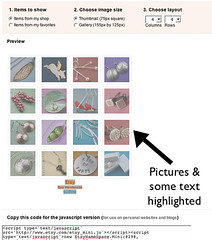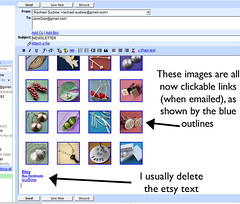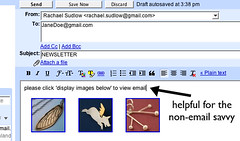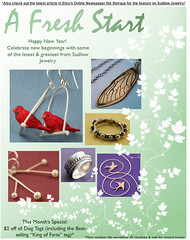
Equipment and Materials
18-amp Digital Rectifier
1000mL Pyrex Beaker
Lacquer
Conductive Paint
2-Part Epoxy
1 quart Bright Copper Electroforming Solution
Copper Anode
22ga Copper Wire
Paint Brush
Tweezers
Copper Rod/Tubing
Latex Gloves
Baking Soda
Scotch-Brite Pad
Water
Liver of Sulfur
Brass Brush
 Day One
Day OneFirst, you need to find an object you wish to electroform. The possibilities are almost endless, from shells, fabric, wax, clay, plastic, paper, seeds and pods, etc. Be creative! For this project, I have selected an iris seed pod from my garden. I have removed the stem and leaves.

Attach a copper jump-ring to your piece. This will serve 2 purposes - to attach to copper wire to suspend in the electroform solution, and to attach to your finished jewelry piece. Use hot glue or a 2-part epoxy.

For porous objects, such as seed pods, they need to be lacquered to seal them. Paint or dip the object in the lacquer, making sure it is completely covered. Hang to dry in a cool, dry place, avoiding dirt and dust. Let them dry overnight.
 Day Two
Day Two
Make sure to avoid touching the lacquered surface of your object. Use gloved hands or tweezers to hold the seed pod, and paint on a thin layer of conductive paint.

Check to make sure areas are covered with an even layer of paint, especially the area where the copper jump-ring meets the seed pod. Paint over the glue and onto the jump-ring. Hang the item to dry overnight.

 Day Three
Day ThreePrepare the copper anode. I use a 22ga sheet of copper with the top bent over so it will hang over the side of the beaker. With gloved hands, scrub it vigorously with a scotch-brite pad to remove any dirt or oils from the surface. Fill the beaker with the electroforming solution, and put the anode in place. With the rectifier turned off, attach the red (positive) lead to the anode with the alligator clip.

Next, prepare the seed pod. Make sure to wear your gloves, as you want to avoid getting any oil or dirt on the painted object. Attach a length of copper wire to the jump ring, secure it by twisting the wire back on itself.

Attach the wire to a long length of copper tubing. The tube will rest on the edges of the beaker, allowing the seed pod to be suspended into the electroforming solution. Attach the black (negative) lead to the copper tubing with the alligator clip.

Turn the rectifier on, keeping the amp and volt set both below 1. Slowly submerge the seed pod into the solution, making sure it is completely covered. After a few seconds, you should be able to see a light layer of copper forming on the surface!

Let the copper tubing rest on the beaker. Make sure there is plenty of space between the anode and the seed pod, they should never touch. You also want to avoid allowing the seed pod to rest against the glass. Check the amp and voltage setting, they should both be at or below 1. You want a very slow and steady build-up of copper to form, otherwise it can flake off.

And now, you wait.
The electroforming process can take several hours - a slow and even layer is the most durable. It is a good idea to check on your piece every 30-45 minutes, checking the amp and voltage setting, as well as your piece to make sure an even layer is forming.
And wait a little more...

After 4 -5 hours, remove the seed pod from the electroforming solution. Rinse in a neutralizing bath of baking soda and water, making sure all acid has been rinsed away.

A solid, even layer of copper has been formed on the surface of the seed pod. It has a bright new-penny copper finish, and is easily tarnished. Once you have your desired finish (I prefer a darker patina using liver of sulfur) lacquer the piece to seal the finish. It is now ready to be turned in to jewelry!


The copper builds up the fastest on thinner areas. You can see how little beads of copper have formed on the wire attached to the seed pod. While this is an interesting texture, they flake off very easily.
Also pay attention to any points or protrusions on your piece, as they can be prone to a fast build-up, seen here on the tips of the iris pod.

Here are some electroformed seed pods in contrast to their original form.


![[Most Recent Quotes from www.kitco.com]](http://www.kitconet.com/images/quotes_special.gif)

























